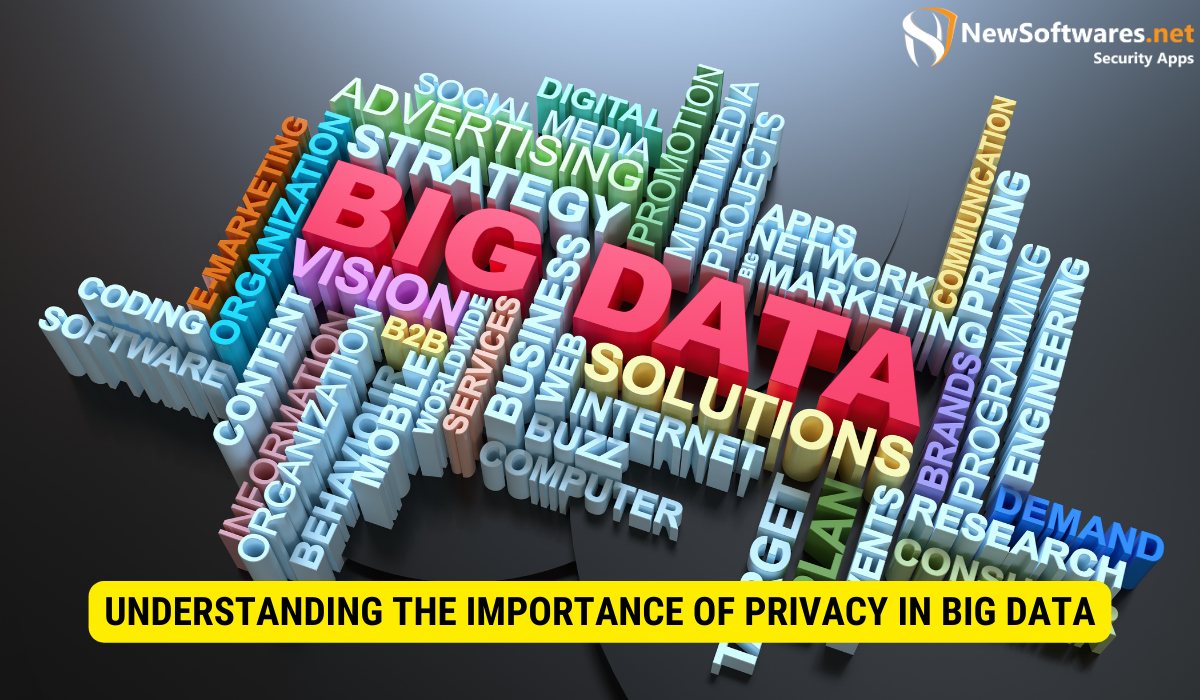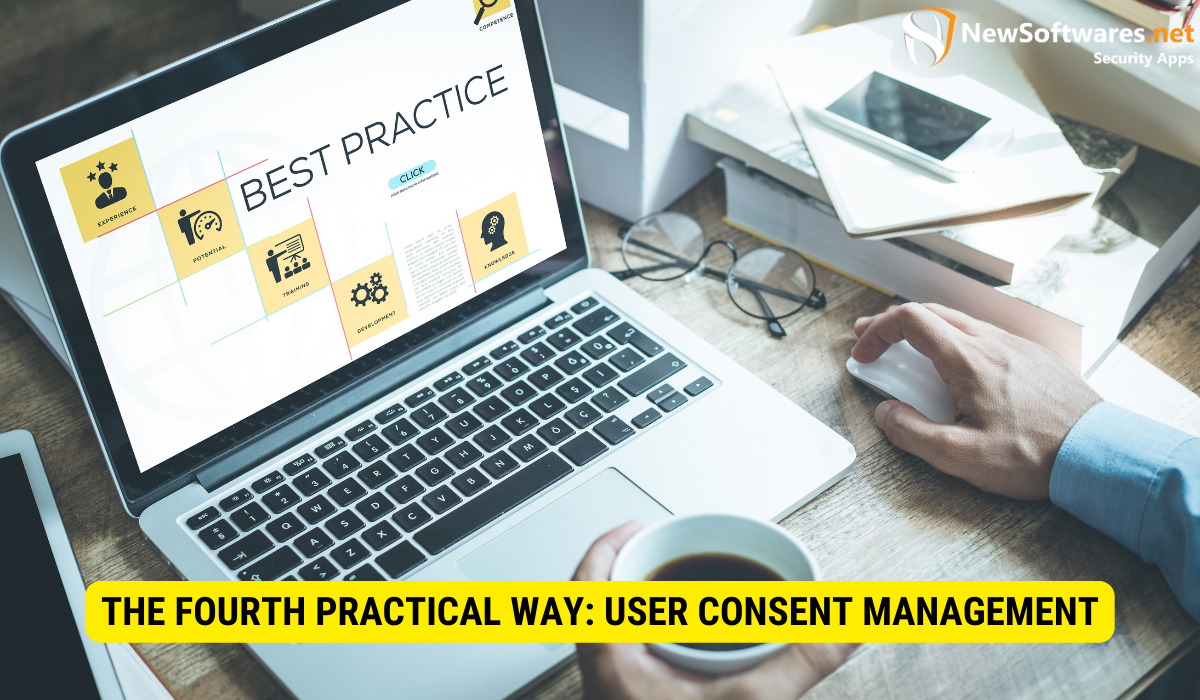Four Practical Ways to Protect Privacy in Big Data:
- Data Anonymization: Data anonymization involves transforming personally identifiable information (PII) into a form that cannot be linked back to individuals, reducing reidentification risks while maintaining data utility.
- Data Minimization: Limiting the collection and retention of essential personal data in big data systems reduces privacy risks and potential harm from data breaches.
- Privacy by Design: Embedding privacy principles into system development from the start ensures privacy considerations are an inherent part of the entire data lifecycle.
- User Consent Management: Prioritizing informed and transparent user consent empowers individuals to make choices about the collection and use of their data, fostering trust and control.
Protecting privacy in the era of big data has become a persistent concern for individuals, organizations, and policymakers alike. With the exponential growth of data collection, storage, and analysis, it is vital to take proactive measures to safeguard sensitive information. I will explore five practical ways to protect privacy in big data, and the measures individuals and organizations can take to mitigate potential risks.”
Understanding the Importance of Privacy in Big Data

In today’s digital age, privacy has become a fundamental right that requires diligent protection. The massive amounts of data generated and processed through big data analytics pose a significant threat to individual privacy. Acknowledging the value and necessity of upholding privacy standards in the context of big data is crucial.
The Concept of Privacy in the Digital Age
Privacy in the digital age encompasses the right of individuals to control the collection, use, and dissemination of their personal information in online and offline contexts. It includes protecting sensitive data, limiting access to confidential information, and ensuring data is used only for its intended purpose.
In the digital age, privacy has taken on a whole new meaning. With the arrival of social media platforms, online shopping, and digital communication, individuals constantly share personal information without even realizing it. Every click, like, and purchase leaves a digital footprint that can be collected, analyzed, and used for various purposes. This concept of privacy extends beyond the traditional notion of keeping personal information confidential; it now includes controlling how our data is used and who has access to it.
Moreover, privacy in the digital age has become a matter of trust. Individuals must trust that the organizations collecting their data will handle it responsibly and ethically. Unfortunately, this trust is often broken, as data breaches and unauthorized access to personal information have become all too common. Therefore, it is essential to establish robust privacy standards to protect individuals from potential harm and ensure their trust in the digital ecosystem.
Why Big Data Poses a Threat to Privacy
While big data offers countless benefits, it also raises serious privacy concerns. The vast scope and granularity of collected data enable the extraction of insights that may compromise individual privacy. The potential for illegal access, data breaches, and unethical use necessitates concrete measures to protect privacy in the context of big data.
Big data analytics involves collecting and analyzing massive datasets to identify patterns, trends, and correlations. This process often requires the integration of various sources of data, including personal information. As a result, individuals’ privacy can be compromised when their data is combined with other datasets to reveal sensitive information about their behavior, preferences, or identities.
Furthermore, the sheer volume of data collected in big data analytics challenges privacy protection. With such vast amounts of information being processed, ensuring that personal data is handled securely and complies with privacy regulations becomes increasingly challenging. As the amount of data increases, the risk of data breaches and unauthorized access becomes more pronounced.
Another concern is the potential for unethical use of big data. While data analytics can bring about significant advancements in various fields, such as healthcare and marketing, it also opens the door to potential misuse. Personal information collected through big data analytics can be exploited for discriminatory practices, surveillance, or manipulation of individuals’ choices and behaviors. This highlights the need for stringent privacy safeguards to prevent misuse and protect individuals’ rights.
In conclusion, safeguarding privacy within the realm of big data assumes paramount significance in our contemporary digital era. This pertains to upholding the rights of individuals to manage their personal data and maintain faith that it will be handled responsibly. The potential hazards posed by big data analytics, including unauthorized access, data breaches, and unethical utilization, underscore the imperative need for stringent privacy protocols and protective measures. By comprehending and proactively resolving these apprehensions, we can ascertain that the advantages of big data can be fully leveraged while simultaneously upholding individuals’ privacy rights.
The First Practical Way: Data Anonymization
Data anonymization is a crucial technique to protect privacy in big data analytics. It involves transforming personally identifiable information (PII) into a form that cannot be linked back to individuals. By removing or encrypting personal identifiers, data anonymization maintains data utility while reducing the risk of reidentification.
What is Data Anonymization?
Data anonymization removes or modifies identifiable information within a dataset to ensure individual privacy. It involves tokenization, substitution, generalization, and aggregation techniques to transform data into an anonymous form.
How Does Data Anonymization Protect Privacy?
Data anonymization obfuscates personal identifiers, making linking data to an individual nearly impossible. By anonymizing data, organizations can analyze and share datasets with reduced privacy risks. It ensures data can be used for research, policy-making, and statistical analysis while minimizing the chance of reidentification.
The Second Practical Way: Data Minimization
Data minimization is a proactive approach to limit the amount of personal data collected and retained in extensive data systems. By collecting and retaining only essential data, individuals and organizations can reduce privacy risks and minimize the potential harm from data breaches.
The Principle of Data Minimization
The data minimization principle advocates collecting and processing the minimum amount of personal data necessary to fulfill a specific purpose. Organizations can mitigate privacy risks and enhance transparency in data processing operations by minimizing data collection and retaining what is required.
Implementing Data Minimization in Big Data
Organizations can implement data minimization practices by conducting periodic data audits, revising data collection policies, and ensuring data collection adheres to proportionality and purpose limitation principles. By adopting a proactive approach to data minimization, privacy risks in big data can be significantly reduced.
The Third Practical Way: Privacy by Design
Privacy by Design is a holistic approach to embedding privacy considerations into technical and organizational practices. It involves integrating privacy-conscious principles and measures from the beginning of system development rather than retroactively adding privacy features.
Defining Privacy by Design
Privacy by Design is a concept that emphasizes the proactive and continuous application of privacy principles throughout the entire data lifecycle. It requires the integration of privacy controls, safeguards, and mechanisms into the Design and architecture of systems, processes, and procedures.
The Role of Privacy by Design in Big Data
In the context of big data, Privacy by Design ensures that privacy considerations are an inherent part of the entire data lifecycle. By diligently embedding privacy principles, organizations can establish a solid framework that safeguards individual privacy, builds trust, and adheres to regulatory requirements.
The Fourth Practical Way: User Consent Management

User Consent Management is crucial in protecting privacy in big data analytics. It focuses on ensuring individuals have awareness, control, and autonomy over collecting and using their data in various contexts.
Understanding User Consent in Big Data
In big data analytics, user consent implies individuals actively and knowingly agreeing to collect, process, and use their data for specific purposes. Consent should be informed, unambiguous, and provided freely, allowing individuals to decide how their data is used.
Effective Strategies for User Consent Management
Organizations can ensure effective user consent management by implementing clear and concise consent forms, providing granular control options, enabling easy revocation of consent, and ensuring transparency in data processing practices. By prioritizing user consent, privacy in big data analytics can be effectively preserved.
Key Takeaways
- Protecting privacy in big data is crucial due to the potential risks associated with unauthorized access and unethical use of personal information.
- Data anonymization and minimization are practical approaches to safeguard privacy in big data analytics, ensuring data utility while reducing reidentification risks.
- Privacy by Design advocates for embedding privacy considerations throughout the entire data lifecycle, fostering trust and compliance with privacy regulations.
- Effective user consent management empowers individuals to make informed choices about collecting and using personal data.
Frequently Asked Questions (FAQs)
Why is privacy important in the context of big data?
Privacy is essential in big data because the increased scope, volume, and granularity of data collection pose risks to individual privacy. Protecting privacy maintains trust, ensures data integrity, and mitigates potential harm from unauthorized access or misuse of personal information.
What are the advantages of data anonymization in big data analytics?
Data anonymization allows organizations to use and share data for research and analysis while minimizing the risk of reidentification. It enables privacy-safe data sharing, enhances collaboration, and supports compliance with privacy regulations.
How can organizations prioritize user consent management in big data analytics?
Organizations can prioritize user consent management by designing user-friendly consent forms, providing meaningful choices, ensuring transparency, and enabling individuals to revoke consent easily. Prioritizing user consent builds trust, fosters user engagement, and enables individuals to maintain control over their data.
Conclusion
Individuals and organizations can navigate big data while upholding privacy standards by adopting these four practical approaches – data anonymization, data minimization, privacy by Design, user consent management, and a vigilant privacy mindset. Protecting privacy preserves individual rights and fosters trust, innovation, and responsible data practices in the digital age.
